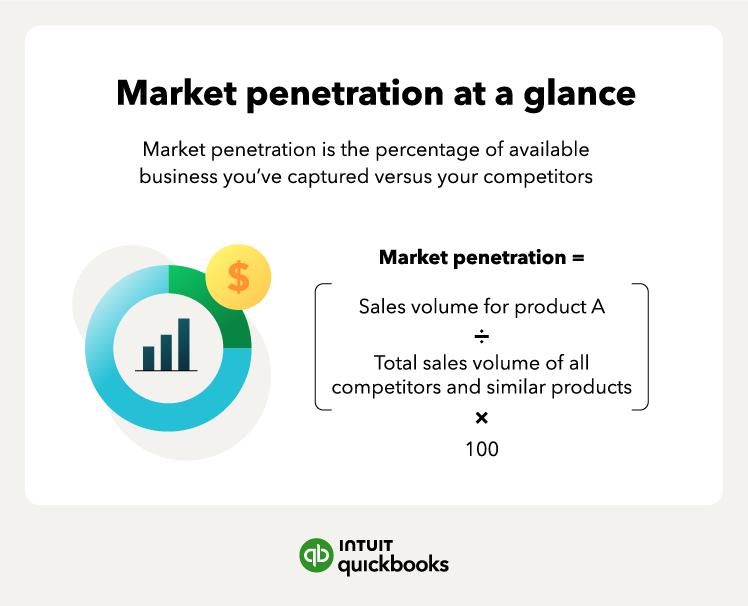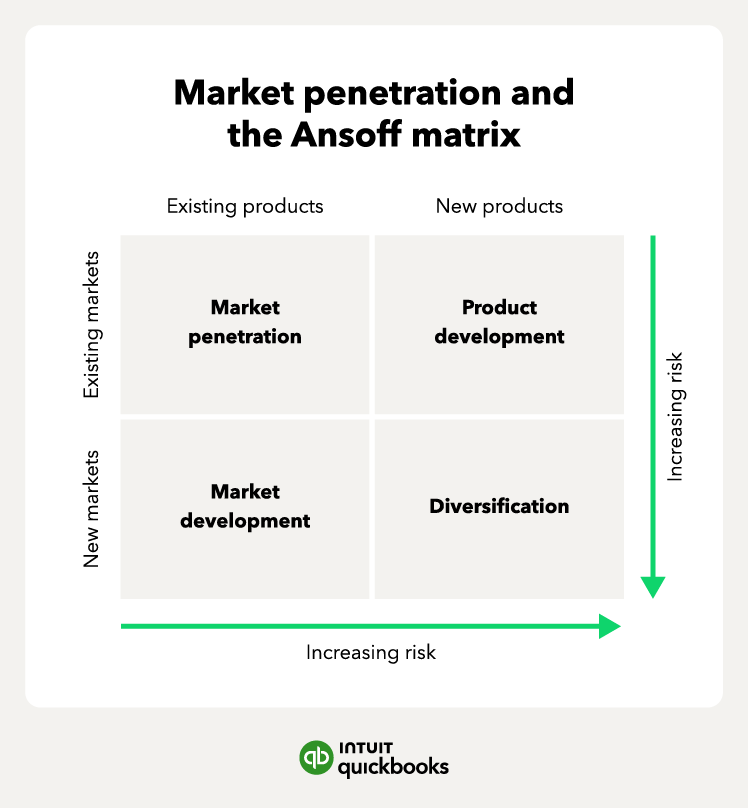Market penetration indicates how well your product is performing in the sea of other products out there that are just like it. But why is this important? Understanding your success as a small business owner comes with understanding your market penetration and how well your product is valued and, in turn, how often it’s purchased by your customers.
But recognizing market penetration is only the start—you’ll also need to learn and implement the correct strategies to improve your market penetration. This includes pricing, updates and improvements, and growth strategies in the market.
- What is market penetration?
- Understanding market penetration
- Market penetration formula
- The Ansoff matrix
- What is a good market penetration rate?
- Market penetration strategies
- 1. Adjust pricing
- 2. Product improvements
- 3. Pursue partnerships
- 4. Grow your territory
- 5. Create a new marketing strategy
- 6. Offer a customer loyalty program
- Market penetration example
- Considerations for your market penetration plan














